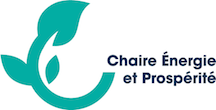Adopting disruptive technologies for decarbonizing hard-to-abate industrial sectors requires experimentation through demonstration (pilot) projects. However, from an economic perspective, the potential long-term benefits and the difficulties in designing relevant public policies are not addressed in the standard valuations of those projects.
Extracting, processing, and delivering energy requires energy itself, which reduces the net energy available to society and yields considerable socioeconomic implications. Yet, most mitigation pathways and transition models overlook net energy feedbacks.
The 2008 and Covid crises have led to increasing public debts and to the launching of unconventional economic policies. Thanks to a complete description of the balance sheets of the domestic and foreign agents, stock-flow consistent (SFC) modelling was well equipped to evaluate their economic consequences.
Using an empirical stock-flow consistent (SFC) model for the French economy, we simulate an imported inflationary shock to emulate the current inflation situation and analyze the resulting macroeconomic impacts on the French economy. Two possible responses are considered: increased wage per capita so as to preserve workers’ purchasing power, increased margins by firms in order to restore their profit share.
The failure of market mechanisms to respect the carbon budget, to assess climate-based financial risks, and to reallocate financial flows on a more sustainable greenhouse gas emission pathway call for strong public interventions and for a strong involvement of both central banks and regulators in the structural change of finance.
This article analyses the integration of climate issues into corporate governance. Based on data from the 2019 CDP survey, it shows that FTSE100, HDAX, and SBF120 companies use similar control and incentive mechanisms to ensure the transparency of climate information, despite some specificities related to their legal and institutional environments. The paper identifies some shortcomings and makes recommendations to overcome them.
This paper reviews the evidence from the recent literature regarding the impact of electricity on rural households. The authors' reading of the currently available evidence suggests that while access to electricity is necessary to support local economic development and stimulate a more inclusive labor market, it is however not sufficient.
Ce séminaire vise à mettre en perspective les pratiques dites de management climat des entreprises, en se focalisant en particulier sur le rôle des normes de durabilité comme levier de décarbonation des entreprises.
Electric batteries and fuel cells (hydrogen) are competing technologies for the energy transition in heavy transportation. This paper shows that the existence of a market niche for fuel-cell electric buses (FCEBs) can be obtained depending on the values of a limited set of key parameters.
Several European governments implemented a generalized gasoline subsidy in the face of inflation following the Ukrainian crisis. In contrast, reducing fossil fuel consumption is crucial to mitigate the current energy and climate crises. Fuel consumption for transport increases with income, making rich households the main beneficiaries of generalized subsidies. In this context, a thorough investigation of the nature of vulnerability to rising gasoline prices is needed to formulate targeted policies.
No Upcoming Events found!


